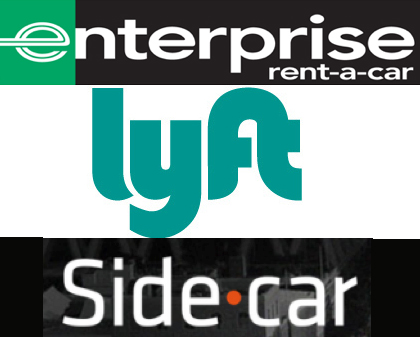The means of transportation in California are changing. The rising rate of congestion on freeways presents a daily problem to drivers and a substantial worry to the state government. The concept of ridesharing offers a way to use a smaller amount of cars in order to transport the same amount of people.
Ridesharing is the public use of a vehicle to transport a group of people from one point to another. There are multiple types of ridesharing, and many companies incorporate some form of it into their businesses.
Vanpooling
Enterprise Rideshare is a division of Enterprise Rent-A-Car that provides a service focusing on helping commuters get to work throughout San Diego, Orange County and Los Angeles by means of a type of ridesharing called a “vanpool,” which is the transportation of a group of people via company-owned van. Rather than driving to work alone, Enterprise Rideshare offers users the option of riding to work with coworkers that live in their area. Group Rideshare Manager of Enterprise Rideshare and San Diego State alumnus Casey Barnes believes the service is a great way to save precious money and energy.
“The cost of a vanpool on its own is about 25-30 percent as expensive as it is for people to drive their own car,” Barnes said.
Vanpools also offer shared driving responsibilities, which relieve participants of the exhaustion of driving themselves to work every day.
Though most companies are just beginning to get into the ridesharing mindset, Enterprise has been involved in the business since 1994. At that time, there were regulations in parts of California that encouraged large employers to use rideshare programs for their employees. Modifications to these regulations in the following years, in addition to the growing trend of people moving farther away from their jobs as a result of affordability in the urbanized market, led Enterprise Rideshare to set the focus for its services upon people that live more than 20 miles away from their jobs.
Peer to peer
On the other side of the spectrum, Lyft, a company that was established a year ago, engages in peer to peer ridesharing within communities. This type of transportation involves drivers using their personal vehicles to transport other Lyft users by taking them to destinations that they are in close proximity to, but might not otherwise visit. Lyft users are able to connect with drivers through a smartphone app.
An eye-catching add-on that discerns Lyft drivers’ cars from others on the road is the fuzzy pink mustache attached to each vehicle.
“The reason we put the pink mustache on the front of the cars is not only to identify Lyft drivers, but also to put a smile on your faces and break the ice,” Lyft Public Relations Coordinator Paige Thelen said.
She explained that even though safety checks involve vehicle inspections and driver screenings for sexual assault, crime and reckless driving convictions, they found the mustache makes people more comfortable with and willing to meet the other person in the car.
“I think what’s really special about the Lyft community is that people are connecting on a personal level, staying in touch and finding common ground, which is not something you see across different transportation options,” Thelen said.
Another rideshare option is Sidecar. Sidecar has been operating in San Francisco, Seattle, Los Angeles, Chicago and Washington D.C. for a while, and it extended its services to San Diego this past September. The official company website describes a friendly environment for participants: “With Sidecar you sit in the front seat, chat with your driver and even choose your own music. When’s the last time you did that in a cab?”
Anyone can become a Sidecar driver as long as he or she has a mobile device that can access the app, a good driving record, a registered, insured, and non-commercial vehicle that has four doors, is in good condition, and was built after 2000. Drivers must also pass a background check. Once qualified, drivers are free to keep donations received from passengers per the app’s suggestion. Some drivers make more than $30 per hour.
Regulating rideshares
The California Public Utilities Commission is a government organization that works to protect California citizens by regulating the services of privately owned service companies. It’s simultaneously dedicated to improving environmental conditions and maintaining a healthy economy within the state. In Sept. 19 CPUC ruled designating companies such as Lyft and Sidecar “transportation network companies,” defining them as “companies that provide prearranged transportation services for compensation using an online-enabled application (app) or platform to connect passengers with drivers using their personal vehicles.”
The legislation also laid down a set of rules to ensure the safety of the consumers that choose to use the companies’ services.
It’s possible this verdict may have a great impact on the world of transportation. Adjunct professor of civil and environmental engineering and co-director of the Transportation Sustainability Research Center at University of California, Berkeley, Susan Shaheen recently organized the Shared Use Mobility Summit, a globally-focused conference that brought together important leaders in the mobility sector to discuss the integration of shared use mobility. One of the main points of discussion at this sold-out event was the integration of separate modes of shared use mobility, and the possibility of a larger service market with more choices available to shared used mobility users.
“I think the decision is notable, and it is very likely to be influential in policymaking in other locations outside of California and outside of the U.S.,” Shaheen said.
Ridesharing, no matter its features, is becoming a more popular choice for transportation in California. With the positive impact it’s had on the overcrowded conditions of transportation infrastructure within the state, it may soon become a popular choice for transportation on a greater scale.









